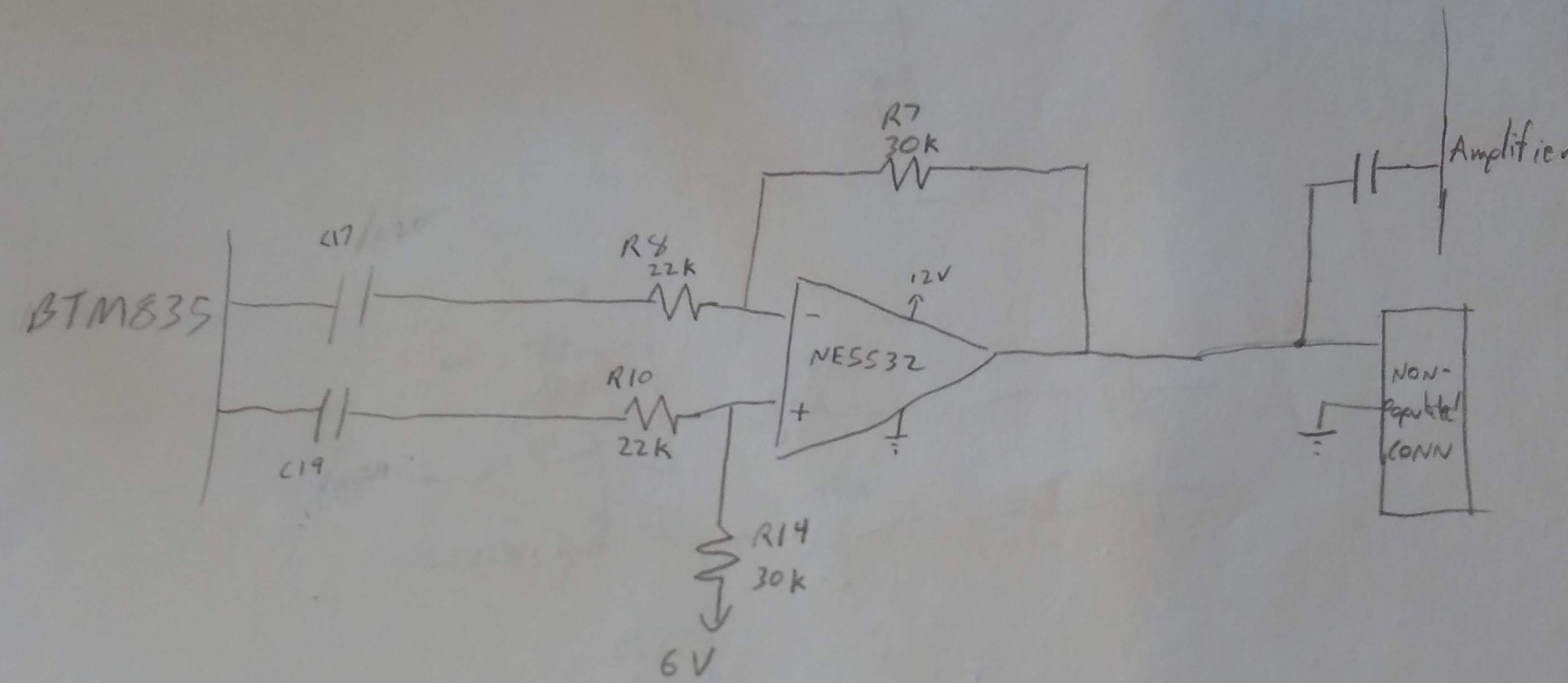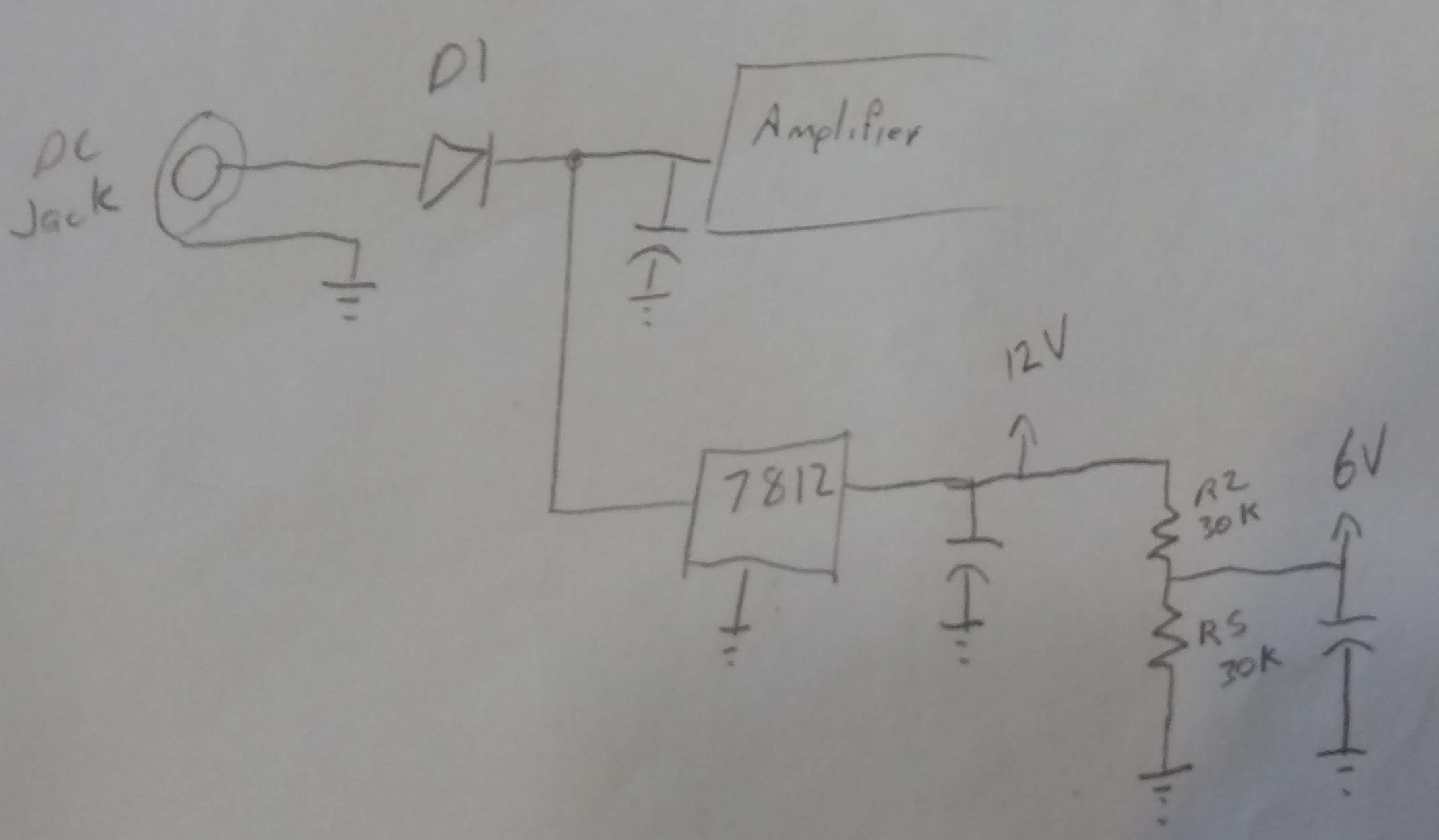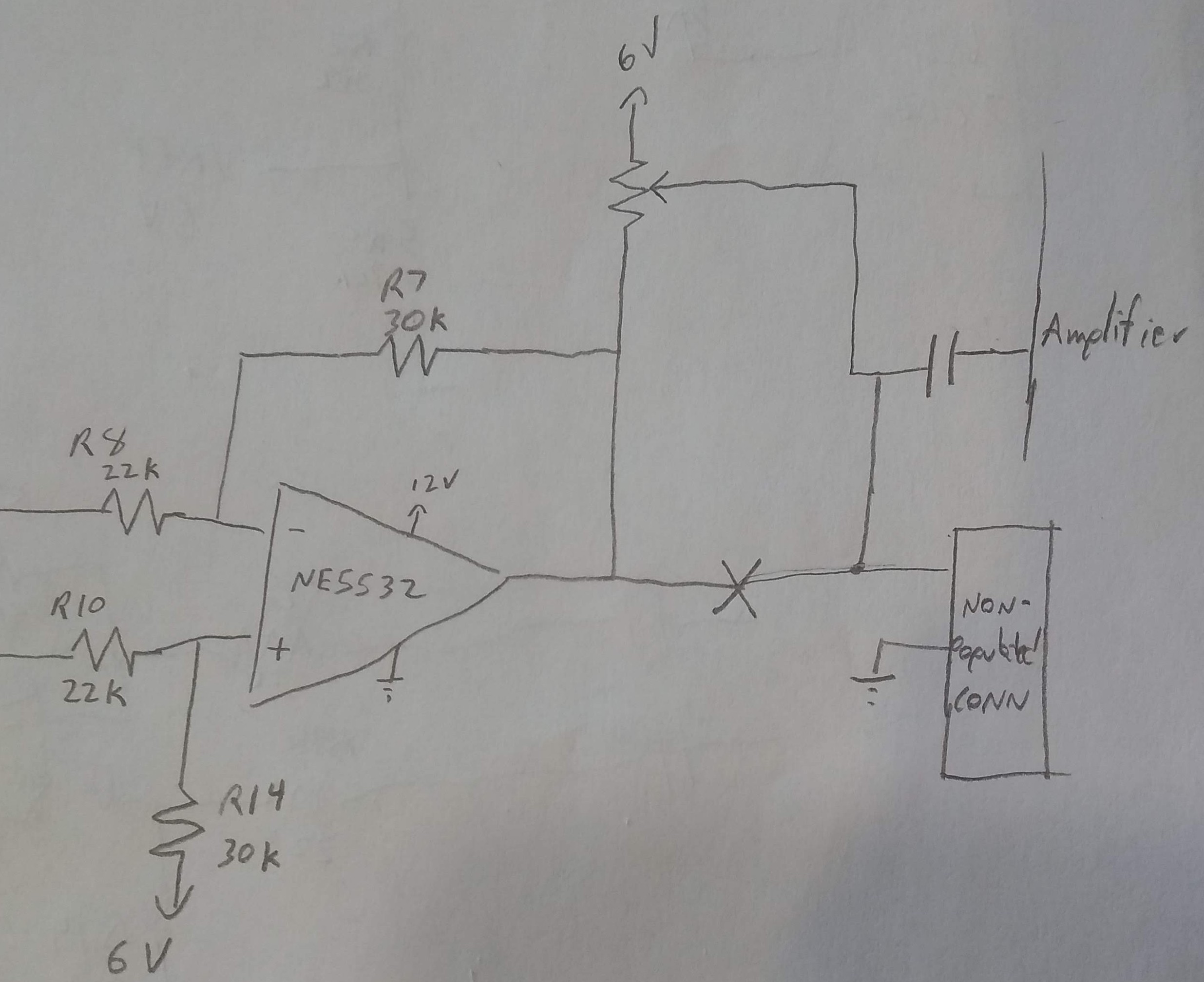I drew out the parts of the schematics that I needed.
Audio Path
The audio path between the BTM835 and the amplifier:

This is one of the two channels. As described before, the circuit takes the differential output of the BTM835, AC couples it to bias to 6V common mode, and converts it to single ended with some gain through a NE5532 opamp. The output, also biased at 6V feeds into a capacitor before the amplifier. If it is truly using a TPA3116, AC coupling like that is required as the amplifier provides it's own bias of 3V.
The output of the opamp I measured up to about +/-0.75V (measured AC mode to remove bias), so is pretty much line level. This means that non-populated connector could be used as a line out, as long as it is AC coupled first to remove the bias.
Conveniently this means there is an easy way to insert a volume potentiometer in the path.
But why is the audio biased at 6V you might ask? By doing this, the designer could keep the audio directly in the middle of the opamp range, while only using a single polarity power supply.(that is, the opamp is powered by +12V/Gnd and not say +6V/-6V)
Power
The power supplies relevant in this circuit:

A simple 7812 linear regulator is used to provide the 12V rail for the opamp, but also for generating the 6V bias. The 6V bias is simply created with a voltage divider, so is not suitable for providing significant DC current. It does have substantial bulk decoupling, 220uF, so can provide plenty of power at audio frequencies.
There is also a 3.8V linear regulator which powers the BTM835 and the LEDs. I couldn't identify the SOT23 part, but it should be a linear as there are no coils.
Input power
Knowing this circuit, we can understand more about the input voltage. The module is labeled 12V-24V. The 24V max is sensible given the TPA3116. But I would have expected the minimum to be closer to 14V as the rail is used through a (non-LDO) linear to create 12V. In the end, running it at 12(and lower) will work, it will just change the circuit as the opamp will then run around 10, and the audio bias around 5.
I did test this with input voltages as low as 11 to work fine as I might want to battery power the module in the future.(4S lithium ion modules are much more common than 5S or 6S) In testing, current stayed below 100mA until the volume started getting pretty loud. It wasn't until near maximum(too loud for me in the same small room as the speakers) that the current went about 1A, with the highest peak I saw around 4A.(I did not use a scope so didn't catch quick pulses very well) Partly because of the low current draw, I decided not to add any additional input capacitance as the amplifier already has 6*330uF caps across the rail. If running the amplifier near it's max, it might help to add some more, but I would recommend doing some testing first to see what voltage drop you have from your supply and how high the currents peak.
Volume control
I initially tested with a regular 1k pot and it worked great.
I switched to a stereo/dual audio taper potentiometer as a volume control. I didn't have many audio taper stereo pots in my stock, and initially used a 50k one. This worked, but increased hiss, and was more subject to 60hz hum. I switched to a 10k one which improved the situation, removing noticable hum, and reducing hiss down to a low level. The hiss and hum was mostly when the pot was set away from the ends, so it seems the amplifier doesn't want an input impedance this high. A 1k would have been much better if I had one or was purchasing one.
I wired this into the schematic like this:

This is one of two channels shown. Notice that the other end of the pot(CCW rotation) is connected to 6V, and not ground. This is because at this point in the circuit, it has a 6V common mode. If I were to connect it to ground, excess DC current would flow through the potentiometer. This current would come from the 6V rail, which is only weakly generated with a divider so it would have changed the circuit undesirably.
Another option would have been to insert an additional AC coupling capacitor out of the opamp before it goes into the pot to bias it to ground; then the CCW terminal of the pot could have been connected to ground. This may have increased noise however as ground noise would now be included.
 Quinn
Quinn
Discussions
Become a Hackaday.io Member
Create an account to leave a comment. Already have an account? Log In.